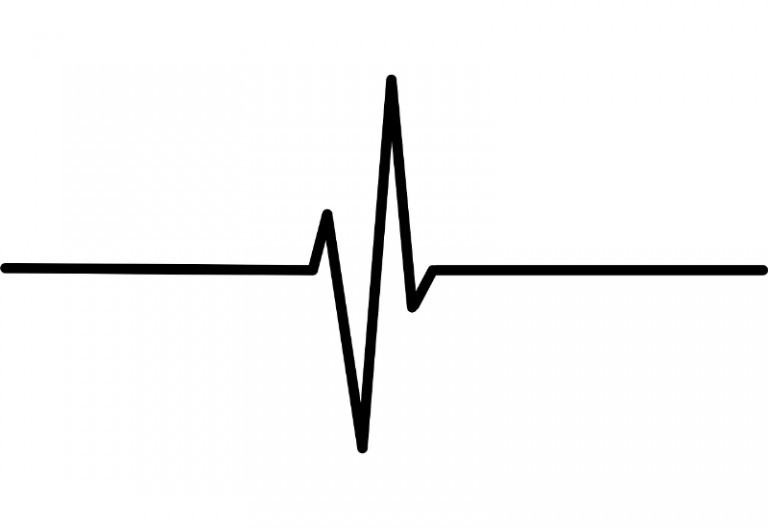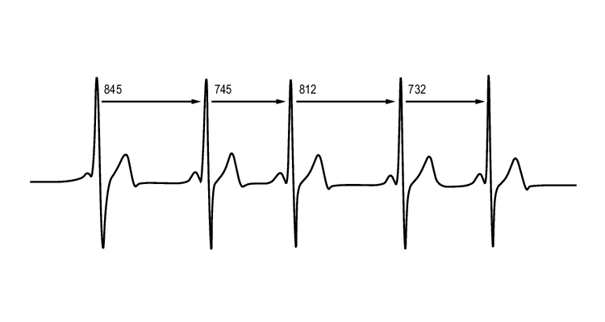
Heart Rate Variability (HRV) may already be a familiar term to you. It’s utilized by professional cycling teams, among other sports disciplines, to fine-tune training schedules and recovery phases, as well as to identify instances of fatigue. In the context of ultra-trail running, HRV plays a critical role in determining whether the body has adequately recovered from extended exertion before embarking on intense training sessions again. Nowadays, practical tools are available that make HRV accessible to everyone.
Contents
What is Heart Rate Variability (HRV)?
Heart Rate Variability (HRV) is a measurement obtained through a heart rate monitor, which tracks the time intervals between individual heartbeats, known as the R-R intervals. By calculating an average over several heartbeats, the device provides an instantaneous heart rate.
For instance, a heart rate of 60 beats per minute indicates that, on average, there is a one-second interval between heartbeats. However, a closer inspection often reveals variations in this period, typically ranging from 0.8 to 1.2 seconds.
Consider the example where the average interval over four heartbeats is 783 milliseconds, equivalent to a heart rate of 77 beats per minute (bpm). This means the interval between the first two heartbeats (845ms) differs from the average by 62ms.

Is this normal?
Absolutely! For a healthy heart, increased variability in heart rate (HRV) while at rest is indicative of better fitness. HRV is influenced by several factors:
- Age and genetics: These are immutable factors beyond your control that remain consistent over time.
- Body’s position and time of day: To ensure accuracy, it’s crucial to take measurements consistently, ideally upon waking and in the same body position (whether standing, sitting, or lying down).
- Physical fitness: HRV serves as a reliable indicator of your fitness level.
The influence of the parasympathetic and sympathetic systems on HRV
The nervous system, with its two key components—the parasympathetic and sympathetic systems—plays a crucial role in regulating heartbeats. The parasympathetic system’s role is to calm the body, leading to a reduction in heart rate and an increase in Heart Rate Variability (HRV). Conversely, the sympathetic system gears the body up for a stress response, elevating the heart rate and reducing HRV.
Typically, in the tranquility of the morning before any physical activity begins, the parasympathetic system is more active. This results in the lowest heart rates and the highest HRV readings of the day. However, if you find yourself generally fatigued, if you have overindulged the previous day, or if you are unwell, the sympathetic system kicks in to manage the stress. This results in a higher-than-usual heart rate and a decreased HRV. In such cases, it might be wise to consider taking it easy with your training for the day.
How do I use HRV at rest in practice?
Using Heart Rate Variability (HRV) at rest becomes slightly more complex than measuring your resting heart rate. HRV assessment requires the tracking of intervals between heartbeats, which is not as straightforward as obtaining a singular value like your heart rate. For accurate analysis, software that conducts time and frequency domain analysis of the heart signal is necessary.
Among the various metrics derivable from HRV, research from the past decade particularly highlights the Root Mean Square of the Successive Differences (RMSSD) as a significant measure. For a more precise gauge of day-to-day fitness variations, you can use the logarithm of RMSSD, denoted as lnRMSSD.
To achieve a robust statistical analysis for RMSSD, it’s advisable to record your heart rate for a duration of 3 minutes. Extending the measurement beyond 3 minutes generally does not offer additional benefits in terms of accuracy. There are several protocols for measuring HRV, including a straightforward 3-minute recording while lying down. Alternatively, some protocols suggest a two-phase approach: first lie down for 3 minutes, then stand for another 3 minutes, making up a total of 6 minutes for the orthostatic tests. This method helps in assessing the heart’s response to changes in body position.
What devices can measure R-R intervals?
To achieve the most accurate measurement of R-R intervals, an Electrocardiogram (ECG) is the gold standard. ECG devices are commonly utilized in the medical settings of general practitioners and cardiologists. These devices offer precise readings by directly measuring the electrical activity of the heart.
For those outside of medical facilities, heart rate monitor belts present a more accessible option, though their accuracy may not always match that of an ECG. Among the available brands, Polar stands out for producing heart rate monitor belts that closely match the accuracy of an ECG, typically showing less than a 1% discrepancy for most measured values. This high level of accuracy has made Polar belts highly favored in scientific research contexts.
Other brands, such as Garmin and Suunto, also offer devices capable of recording R-R intervals. However, it’s worth noting that the signal quality and, consequently, the measurement accuracy may sometimes fall short of what Polar belts provide. When choosing a device for measuring R-R intervals, considering the balance between accessibility, accuracy, and your specific needs is crucial.
What devices can record R-R intervals for HRV?
Mid-range and high-end GPS watches from various brands typically support recording R-R intervals—just ensure to check the product specifications for this feature. Polar devices, for instance, can record these R-R intervals at rest, but not during physical activities.
After your GPS watch captures the R-R intervals, exporting the data for analysis can be somewhat cumbersome. This process involves using free software like Kubios, which, despite its utility, may not be the most user-friendly option. Fortunately, the free Elite HRV app offers a more convenient alternative. When used with a Bluetooth heart rate belt, such as the highly accurate Polar H10 belt (available with a 10% discount on the official Polar website using the promo code RUNMOTION), the app efficiently records the R-R intervals and calculates all necessary HRV metrics in just a few seconds. It’s noteworthy that comparisons between values from Elite HRV and Kubios have shown them to be precisely the same.
Establishing your cardiac profile with lnRMSSD
By dedicating just 3 minutes each morning to measuring your lnRMSSD, you can start to compile a comprehensive picture of your cardiac health over time. While a single absolute value of lnRMSSD might not provide much insight in isolation, consistently tracking it three to four times a week, or even daily, over an extended period allows you to develop a personalized cardiac profile and observe fluctuations in your fitness level.
Should you notice that your lnRMSSD is significantly lower than what is typical for you, it’s advisable to take a rest day to alleviate stress on your body. This proactive approach helps prevent the onset of chronic fatigue. Once your lnRMSSD readings return to their usual range, you may consider resuming more intense training sessions. Conversely, an lnRMSSD reading that is markedly higher than usual can also indicate fatigue, suggesting the need for recovery. This method of monitoring enables you to tailor your training and recovery to your body’s needs, optimizing overall well-being and performance.
Going further: Heart Rate Variability (HRV) during exercise to detect the anaerobic threshold?
The stress of exercise increases heart rate and decreases heart rate variability (HRV). While the implications of HRV at rest are well-documented, exploring HRV during exercise is a burgeoning field. Emerging research suggests the potential of using HRV to pinpoint the anaerobic threshold via statistical analysis. The anaerobic threshold signifies the equilibrium point of lactate production and removal. This level of exertion—ranging between 70 and 92% of an individual’s Maximum Heart Rate, varying according to training intensity—is pivotal for crafting effective training programs. At this threshold, the parasympathetic and sympathetic nervous systems are believed to neutralize each other’s influences.
Traditionally, the anaerobic threshold has been determined through lab-based exercise tests. However, should HRV analysis during exercise prove reliable for this purpose, it could revolutionize how runners identify their optimal training zones. By using a simple heart rate belt, athletes might accurately assess their training zones, monitor HRV changes weekly, and strategically plan races to coincide with peak anaerobic thresholds and fitness levels. Such advancements could offer a unique edge in achieving personal bests and optimizing performance.